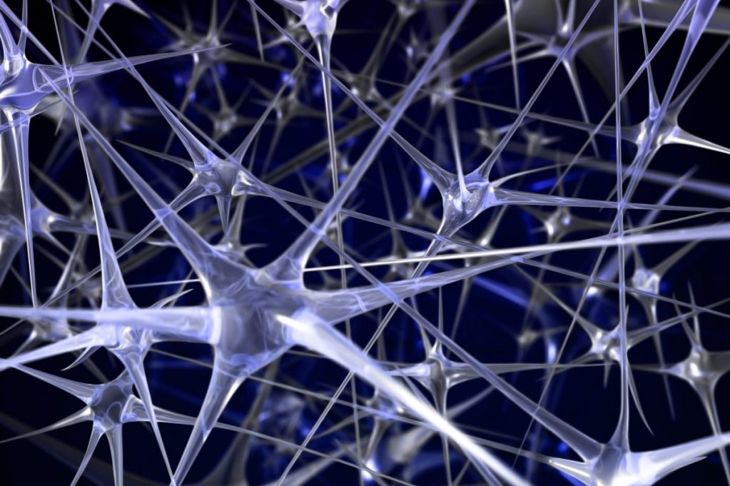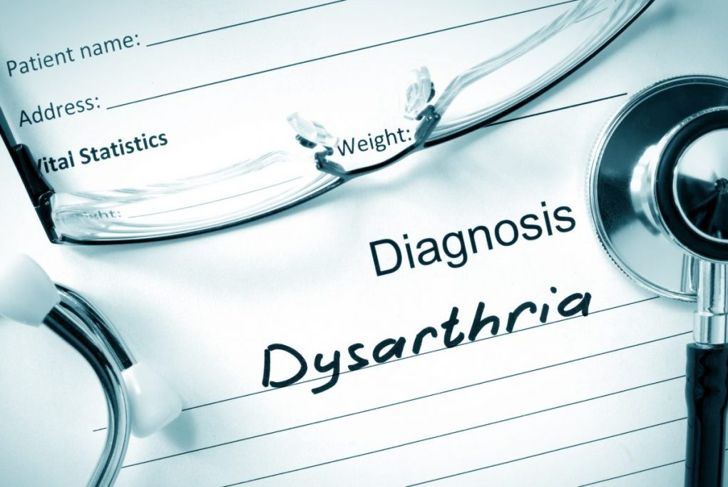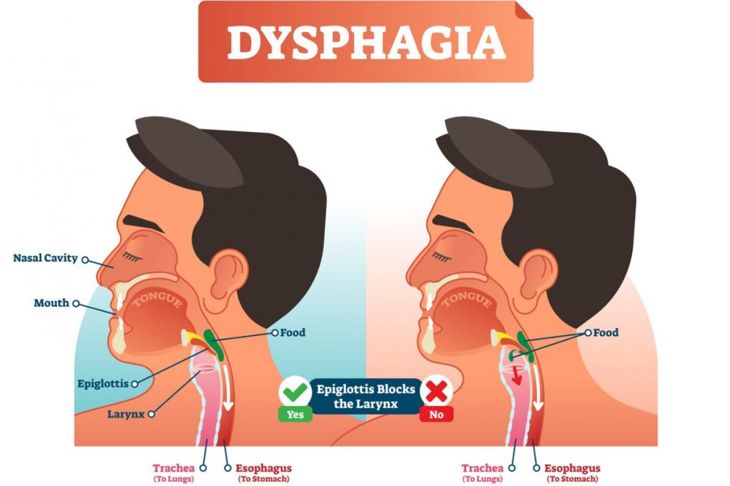To speak clearly, we need the muscles in our vocal cords, diaphragm, tongue, and lips to work in unison. When the brain cannot control these muscles properly, a person has trouble speaking and making himself understood. This condition is dysarthria, a motor speech disorder that affects respiration, airflow direction, laryngeal function, articulation, and phonation.
Symptoms of Dysarthria
Depending on the muscles involved, dysarthria can make people speak in a flat, hoarse voice, loudly, quietly, or with jerky inflections. Sometimes people mumble or must strain to speak. They may slur their speech or speak too slowly or fast. When dysarthria affects the muscles of the lips and the tongue, the condition can interfere with swallowing and chewing and cause drooling, as well. These symptoms can make people with dysarthria harder to understand. In some cases, they can only use single words or short phrases, and their speech may be completely unintelligible at times.
Causes of Dysarthria
Dysarthria interferes with the brain and nervous system’s ability to control the muscles used for speech. If the damage occurs at or before birth, as it does for babies with cerebral palsy, this qualifies as developmental dysarthria. When the damage occurs later in life because of a stroke, brain tumor, head injury, or progressive condition, doctors diagnose acquired dysarthria. Developmental dysarthria is the more common of the two.
Diagnosing Dysarthria
A speech-language pathologist (SLP) can diagnose dysarthria. The consultation generally involves background medical information, such as any diseases a patient have that could affect speech. The SLP will have the individual perform a series of simple tests to assess the strength of the speech muscles; the practitioner may record the patient sticking out her tongue, making specific noises, reading aloud, discussing specific topics, counting, singing, and blowing out a candle.
Types of Dysarthria
Dysarthria can be classified into several categories based on the cause.
- Strokes and degenerative conditions cause ataxic dysarthria. Symptoms include slurred and uncoordinated speech and uneven volume.
- Flaccid dysarthria can result from the reasons above, as well as tumors and trauma to the brain. Nasal and breathy speech, a drooping jaw and swallowing issues can identify this type.
- People with Huntington’s disease or others related to the basal ganglia can develop hyperkinetic dysarthria. Speech sounds strained and uneven both in volume and speed.
- Hypokinetic dysarthria is similar, but patients speak quietly and in short bursts, sometimes in a single pitch and gradually faster.
- Spastic dysarthria causes slow speech, a hoarse voice, and spasms and hyperactive reflexes.
- Unilateral upper motor neuron dysarthria is short-term, affecting only one side of the face, and usually appears after a stroke or surgery.
- People with a combination of any of the above types may be diagnosed with mixed dysarthria.
Treating Dysarthria
SLPs are limited in terms of the treatment they can provide for dysarthria. Treatment focuses on improving the patient’s ability to talk, finding alternative ways to communicate, and helping both the affected individual and people close to them adapt. The SLP may encourage slowing down speech or exercises to improve speech clarity. She will use a variety of communication aids such as alphabet boards, charts, books, amplifiers, apps, and computerized voice output systems. In any case, there’s no guarantee that therapies with an SLP will help or resolve the issue. Results will depend on the location and extent of the damage and any underlying conditions.
Communicating with Dysarthria
People with dysarthria sometimes find it easier to get their point across if they get rid of background noise, take a deep breath, face the people they want to talk to, touch them or call their name, and then start with single words before saying an entire phrase. This signals to listeners that they need to pay attention. Speaking more slowly and adjusting the pitch of the voice can help make the message clearer. Focusing on important words, making facial expressions, and using hand gestures can also help listeners understand more easily. Pausing between topics also helps. When you have trouble getting across, try pointing, or writing down your phrases onto a notepad or smartphone.
What Can Friends and Family Do?
To make it easier to understand a person with dysarthria, try to reduce distractions and background noise, maintain eye contact, allow them to finish their sentences, and don’t pressure them into hurrying up. If you don’t understand what they’re saying, don’t pretend as if you do. Try to ask simple, yes or no or leading questions, paraphrasing when necessary. It can be very frustrating for family and friends to take part in conversations with one or more people with dysarthria, but a speech pathologist can help.
Misconceptions about Dysarthria
People often associate verbal ability with intelligence, which can lead to people with dysarthria being assumed inarticulate or intellectually challenged. Dysarthria is a physical affliction — it does not affect intelligence or the ability to understand or attribute meaning, though sometimes these issues can overlap. Speech is a part of everyday life, and having speech problems can affect social interaction, access to education, and even employment opportunities. Recognizing the symptoms, getting a diagnosis, and intervening early on can improve their quality of life for people with dysarthria.
Complications from Dysarthria
Depending on what caused the dysarthria, long-term outcomes will vary. Symptoms can improve for people who have surgery to remove a brain tumor, for instance, but deteriorate for those with degenerative conditions. It is common for people with acquired dysarthria to develop dysphagia symptoms soon after, which makes it hard for them to swallow.
Living with Dysarthria
Living with dysarthria can be frustrating. It can be hard for people to make their point known, to command attention, or to demand respect because of the trouble they have articulating their thoughts and expressing their emotions. Accepting the condition and explaining it fully to friends and acquaintances can help everyone involved become more comfortable with the different ways in which they must communicate.

 Home
Home Health
Health Diet & Nutrition
Diet & Nutrition Living Well
Living Well More
More




















